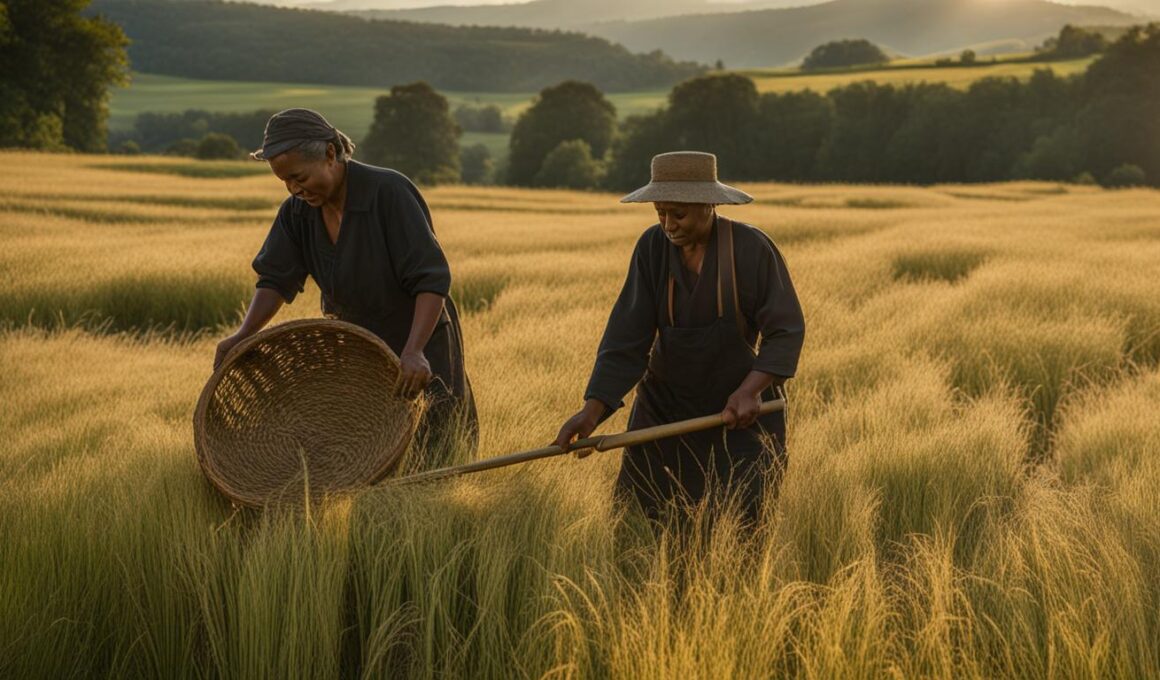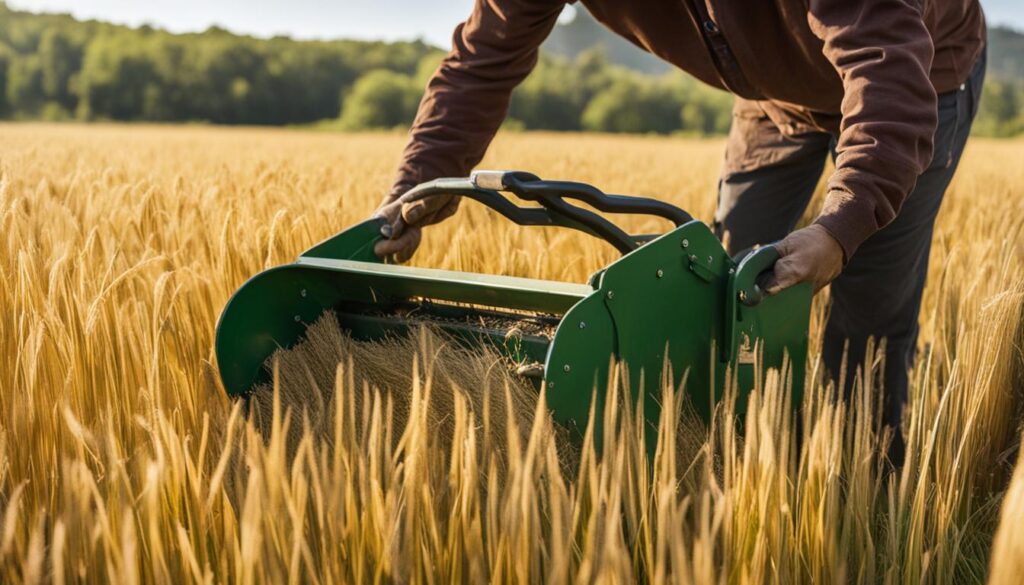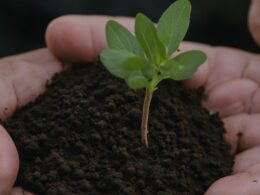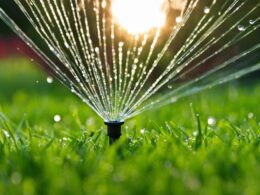Harvesting your own grass seed can be a rewarding experience that not only saves you money but also ensures a healthy and sustainable lawn. By learning how to harvest grass seed, you can collect high-quality seeds that are tailored to your specific lawn needs. In this article, we will guide you through the process of harvesting grass seed, providing you with the necessary tools and steps involved.
Whether you want to fill in bare spots in your lawn or create a new grassy area, knowing how to harvest grass seed is essential. By collecting grass seed from your own lawn, you can ensure that it is well-adapted to your local climate and soil conditions. This not only promotes optimal growth but also reduces the risk of weeds and diseases.
Stay tuned as we explore the tools you’ll need, choosing the right harvesting location, timing and indicators for seed maturity, various methods of collection, proper seed storage, and the best time to harvest based on your grass variety. Let’s get started on your journey to becoming a grass seed harvesting expert!
What You Need for Grass Seed Harvesting
To successfully harvest grass seed, you will need a few essential tools such as gloves, a bag or container to collect the seeds, a sieve to filter the seeds, and scissors or grass shears to cut seed heads (optional). Additionally, it is important to have a strong, airtight container for long-term seed storage.
When it comes to grass seed harvesting tools, gloves are crucial to protect your hands from any prickly seeds or debris. They will also provide a better grip on the tools, making the process safer and more comfortable.
A bag or container will be used to collect your grass seeds as you cut or gather them. It’s important to choose a bag that is durable and will hold the seeds securely without any risk of spills or leaks.
A sieve is useful for removing any unwanted particles or debris from your collected grass seeds. This will ensure that you have clean, high-quality seeds for planting.
If you choose to cut the seed heads directly, scissors or grass shears will come in handy. They will allow you to make clean cuts, ensuring that the seeds remain intact and undamaged during the harvesting process.
Finally, a strong and airtight container is essential for storing your harvested grass seeds. This container will protect the seeds from moisture, pests, and other potential sources of damage, allowing them to remain viable for longer periods.
Remember, proper storage is crucial for seed longevity. Store your seeds in a cool, dry place to maintain their quality and prevent any potential damage.
Choosing the Right Harvesting Location
When it comes to harvesting grass seed, choosing the right location is crucial for a successful harvest. Optimal sun exposure is key, so select a spot that receives partial to full sun throughout the day. This will ensure that your grass seeds receive the necessary sunlight to thrive.
It’s also important to choose a weed-free area for harvesting. Avoid locations with weeds to prevent spreading weed seeds onto your lawn, which can cause unwanted weed growth. By selecting a weed-free area, you’ll ensure that the harvested grass seed is clean and free from any potential weeds that could affect your lawn’s appearance and health.
The size of the harvest area will depend on the size of your lawn and the amount of overseeding required. Choose a location that provides enough space to collect a sufficient amount of grass seed for your needs. This will enable you to overseed your lawn effectively and achieve the desired results.
Remember, the right harvesting location with optimal sun exposure and a weed-free area is essential for successful grass seed harvesting. By selecting the right spot, you’ll be on your way to collecting high-quality seeds that will contribute to a healthy and vibrant lawn.
Timing and Indicators for Harvesting Grass Seed
Timing your grass seed harvest correctly is crucial to ensure the best results. After the grass has flowered, wait for approximately 20 to 30 days before harvesting. During this time, the grass seed matures and reaches its optimal readiness for collection.
One way to determine if the seeds are mature is by observing their color and texture. Mature grass seeds typically have a tan, orange, or golden color, indicating their readiness for harvesting. Additionally, the texture of the seeds should be firm and resilient to pressure.
You can also perform a seed readiness test by gently squeezing or denting the seeds with your fingers. If the seeds hold their shape and do not easily break, they are firm enough for harvest.
Methods of Grass Seed Collection
There are three main methods for harvesting grass seed: collecting it with your hands, using grass shears or scissors to cut seed heads directly into a bag, or using a handheld brush harvester for larger areas. Each method has its own advantages and depends on the size of your harvest area and the amount of time you have.
If you prefer a more hands-on approach, hand collection is a simple and cost-effective method. All you need to do is walk through your lawn, gently rubbing the seed heads with your hands and collecting the seeds in a bag or container. This method works well for small areas or when you have limited time.
For precise cutting and minimal seed loss, grass shears or scissors are the perfect tools. Simply trim the seed heads directly into a bag or container, ensuring that you capture as many seeds as possible. This method is ideal for medium-sized lawns and provides more control over the harvesting process.
When it comes to larger areas, a handheld brush harvester can make the task much easier. This tool allows you to rake through the grass, collecting the seed heads in its bristles. With a handheld brush harvester, you can cover more ground in less time, making it a great option for extensive lawns and commercial applications.
No matter which method you choose, make sure to handle the harvested grass seed with care to avoid damage and loss. Keep your equipment clean and follow proper storage techniques to maintain seed viability for future use.
Storing Your Harvested Grass Seeds
Once you have collected your grass seeds, it is important to store them properly to maintain their viability. Proper seed storage ensures that your hard work pays off when it’s time to plant them.
To start, transfer the seeds to a clean, airtight container. This will keep them protected from moisture and pests, preserving their quality. Choose a container specifically designed for seed storage to ensure the best results.
Remember to store the container in a cool and dry place. Moisture and heat can degrade the seeds, affecting their germination rates. Find a location away from direct sunlight or any other sources of heat. It’s crucial to maintain a consistent temperature and humidity level for optimal seed storage.
By controlling these factors, you can prolong the lifespan of your grass seeds. When it’s time to sow them, you’ll have high-quality seeds ready to go, ensuring the success of your lawn or garden project.
Best Time to Harvest Grass Seed Based on Grass Variety
The best time to harvest grass seed depends on the type of grass you have in your lawn. Understanding the appropriate harvest timing for your grass variety is essential for successful seed collection. Let’s explore the optimal harvest timings for cool-season and warm-season grasses.
For Cool-Season Grasses:
Cool-season grasses like bentgrass and Kentucky bluegrass should be harvested in late July to early August. During this time, the grass seed has reached maturity, and the seed heads will have turned a tan, orange, or golden color. Harvesting cool-season grass seed during this period ensures the highest seed quality and viability.
For Warm-Season Grasses:
Warm-season grasses, such as bermudagrass and buffalograss, have a different harvest timing compared to cool-season grasses. These grasses should be harvested in late August to late October. By this time, the seed pods or seed heads of warm-season grasses will have matured and turned the appropriate color for harvesting, indicating that the seeds are ready for collection.
It’s important to note that these are general guidelines, and specific harvest timings for different grass varieties may vary. To get precise timings for your region and grass type, consider consulting your local cooperative extension office, which can provide expert advice tailored to your area.
Remember, timing is crucial when it comes to harvesting grass seed. By following these guidelines and paying attention to the maturity and color of the seeds, you can ensure optimal grass seed harvest and enhance the success of your lawn establishment or overseeding projects.
What is the best way to harvest grass seed for optimal production?
The producing grass seed process requires careful planning and execution for optimal results. The best way to harvest grass seed for maximum production is to ensure the grass is mature and dry before cutting. Using specialized equipment can help to efficiently gather and clean the seeds for the best outcome.
Conclusion
Harvesting your own grass seed can provide you with a range of benefits, from cost savings to environmental sustainability. By taking the time to learn proper harvesting techniques and ensuring correct seed storage, you can have a thriving lawn at a fraction of the cost.
One of the key advantages of harvesting your own grass seed is the cost savings. Instead of purchasing commercial grass seed, which can be expensive, you can collect and store seed from your existing lawn. This not only saves you money but also allows you to control the seed varieties you use, leading to a customized lawn that suits your preferences.
Furthermore, harvesting your own grass seed promotes environmental sustainability. By avoiding the need to purchase seed from external sources, you reduce the carbon footprint associated with shipping and packaging. Additionally, you can select grass varieties that are well-adapted to your local climate, which reduces the need for excessive water, fertilizer, and pesticide use.
So why wait? Start reaping the benefits of grass seed harvesting today. With the right techniques and storage methods, you can achieve a beautiful and resilient lawn while also making a positive impact on your wallet and the environment. Happy harvesting!











